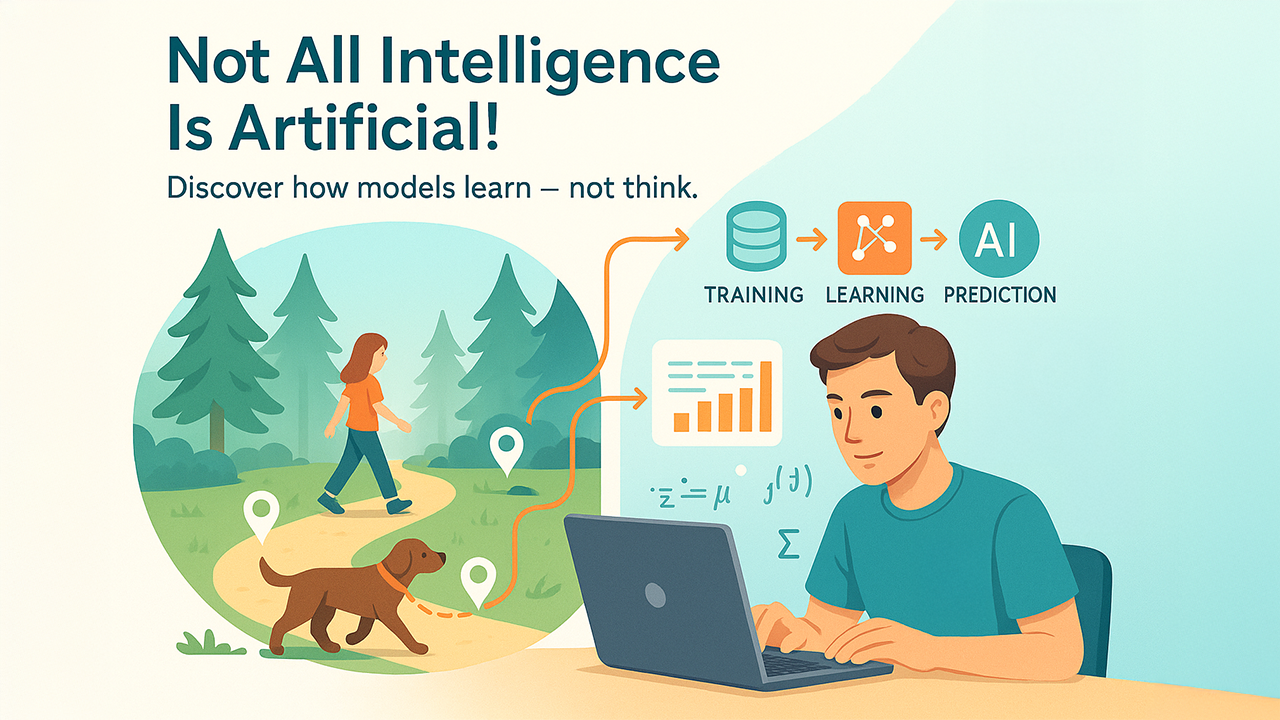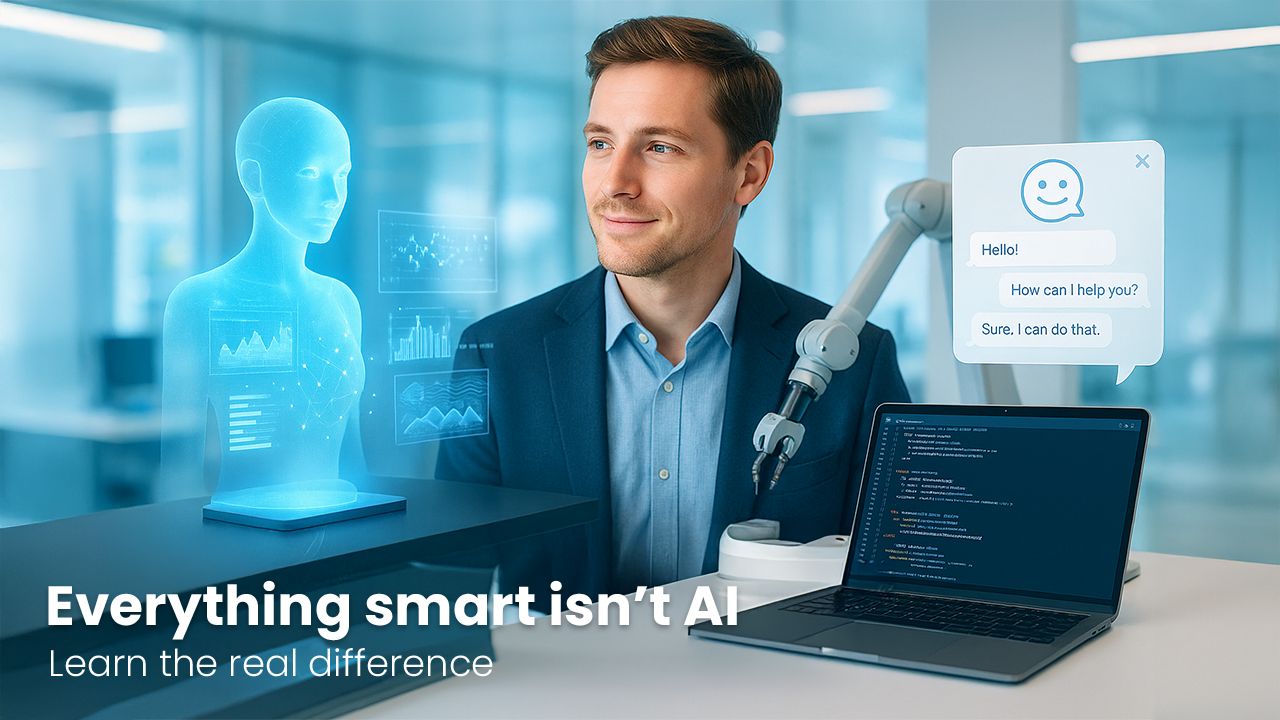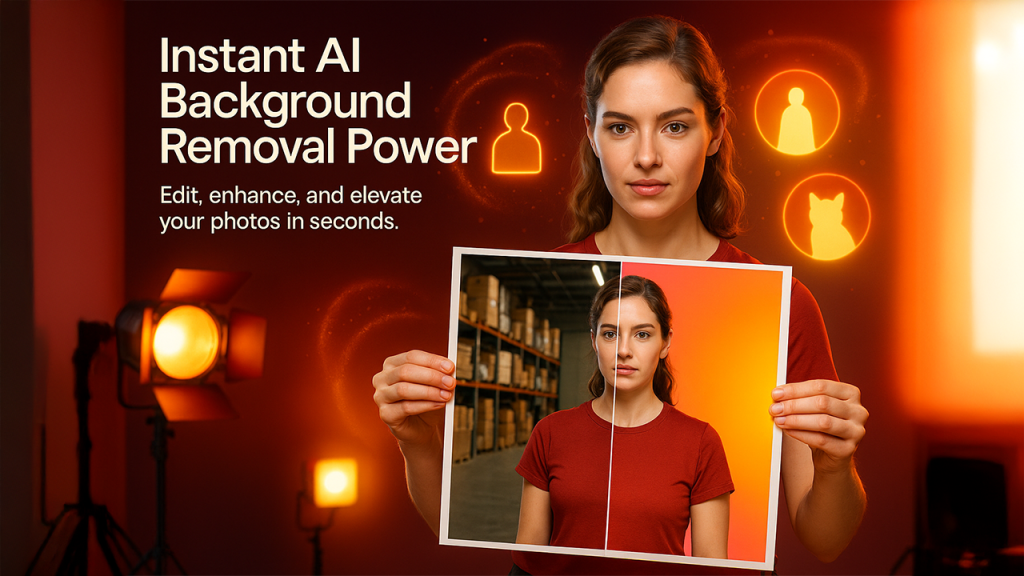ChatGPT has changed the perception and demand of AI technology in the industry. Its introduction and subsequent popularity created an unprecedented interest in AI technology. The heightened surge in AI’s popularity has brought paradigm shifts across various industries. Some businesses have even redefined their product catalogues as “AI products.” It is a deceptive marketing tactic that experts commonly term as “AI washing.” There is also a psychological aspect with major companies experiencing FOMO (Fear of Missing Out). More than adopting AI, companies want to be perceived as the one adopting AI. So, now the question arises what is AI and what is not AI?
This blog answers the second question deeply. However, let us first quickly understand what AI is.
Understanding AI- What Is AI?
The overall concept of Artificial Intelligence refers to creating devices or machines that can mimic human intelligence. AI platforms and AI Tools are engineered in a way that makes them capable of thinking, learning, and making decisions. The term “AI” generally causes confusion among professionals and businesses because of its wide and sometimes vague usage. A genuine AI system is composed of an agent that can perform processes in a specific environment. There are three specific characteristics that truly defines an AI system-
- Learning: The capability to learn from information and enhance over time without explicit programming.
- Adaptability: The ability of the system to adapt to new situations and applications beyond their original or initial purpose. An AI system must have the capability to think or reason and try to achieve objectives through logical deduction.
- Autonomy: This is the most crucial characteristic. An AI system must have the ability to independently perform tasks with minimum or even zero human interference.
Now that we have understood what AI is, it is important to deeply explore what is not an AI.
What Is Not AI?

The following subsections illustrate the aspects that cannot be considered as AI-
An Algorithm-
An algorithm cannot be termed as an AI. An algorithm is a set procedure for performing a specific task. Generally, we consider algorithms that are scripted in computer code and executed by a computer. However, algorithms can also be defined in terms of math, for example, we can create an algorithm for calculating the area of circle or applying quadratic formula. Algorithms can also be used for routine tasks such as directions to set up a desk or recipes to make a chocolate chip cookie.
A Model-
It is wrong to consider a model to be Artificial Intelligence. A model is a group of math formulae extensively trained with data to make forecasts and draw conclusions by assessing the trends and searching for trends. A task is allocated to make sure that the model is trained on a copious amount of data. This might mean choosing the best 5 guitar photographs from the pool of 10 million. When users just input “Washington,” it can try to figure out whether they are referring to a US state, US capital, or a historical figure. As the model works through the data and completes the task, the model creates its own processes. This is referred to as machine learning.
On the internet, you will find countless articles describing machine learning as “black box.” Though the term is correct, it is incomplete. Imagine a situation where you place a girl and dog in the woods. You attach a GPS to both. Now, you tell them to go from point A to point B. The girl follows one direction, and the dog follows another. On your GPS, you can clearly see different directions followed by the two. The girl can explain why she chose a certain path, but the dog cannot. Machine learning is just like that dog; it can complete the job but cannot provide reasons and explanations for how it works.
Robots-
Though the two are related, robotics is entirely different than AI. Robots have been around for a while and have not exactly emerged from AI. Robots are machines that are constructed and designed by people to execute automated processes. They follow set instructions and automate routine tasks. Human programmers create code that is linked to a robot and ultimately guide it to perform a task. Modern robots greatly rely on AI technology, but there are still a lot of robots in the market that do the same and unchanging tasks.
Neutral-
It is a mistake to think that AI works without any bias. It is not exactly neutral. AI depends a lot on algorithms and algorithms designed by programmers who have their own bias. Even, the historical data that is used to train AI might contain certain biases. For example, what is true in 2016 might not be true in 2025. Therefore, AI might be trained to expect certain appearance, behavior, or dialect from humans. Thus, if AI encounters humans who behave, appear, or speak in a different way, they might not provide the same output. This is not the fault of those users but rather programmers who created the AI with bias.
In the future, developers can create superior AI technology that can incorporate all types of humans and can understand all types of thought processes.
Chatbots-
The phenomenal popularity of ChatGPT has made the term “AI chatbot” synonymous with AI. However, voice assistants such as Amazon Alexa, Siri, and Google Assistant are not AI. They leverage a combination of NLP, speech recognition, and predefined responses. However, they do not have adaptability and the ability to make complex decisions. Furthermore, specialized chatbots that adopt linear regression models and are used to forecast sales based on historical data are also not AI.
RPA-
Robotic processing automaton (RPA) tools are utilized in the industry to automate routine tasks such as data cleaning, data entry, data validation, data processing, etc. They work as per the defined thresholds as well as rules. RPA is not strictly AI as it lacks the adaptability and learning characteristics of a genuine AI system. RPA systems make sure that decisions and execute them as per the group of if-then rules resulting in clear and deterministic results.
Singularity-
The singularity is also not AI. The singularity refers to a hypothetical point in the future when machine learning and Artificial Intelligence will no longer be under the control of humans. A lot of AI enthusiasts and experts have written countless blogs and books on singularity. However, the immediate impact of AI is job losses, and efforts must be made to make sure that AI is integrated in society in the smoothest way possible.
AI Vs Not AI: Learning Important Differences
| AI | Not AI (All Tools and Technology Not AI) |
| Understand data, evolve, and enhance over time. | Follow fixed rules or algorithms without learning or enhancing. |
| AI can easily reason, make good decisions, and autonomously act in new situations. | Implement predefined instructions and lacks genuine autonomy or reasoning. |
| Integrates algorithms, data, and models to create smart outcomes. | Utilizes models or algorithms back lack self-learning or adaptability. |
| Identifies patterns and adapts to new contexts or tasks. | Manage routine or predictable tasks within set boundaries. |
| Imitates human-level cognitive functions like inference or reasoning. | Performs programmed or automated responses without cognitive versatility. |
| Continuously evolves and refines output based on new input or feedback. | Creates the same outcome each time unless updated manually. |
| Allows new capabilities such as predictive analytics and autonomous systems. | Performs rule-based or static processes without any level of innovation or adaptation. |
Conclusion
Understanding how AI is different from non-AI technology is vital to understanding modern tech landscapes. Genuine AI platforms possess capabilities for learning, adaptability, and autonomy—features that are missing in standard chatbots, algorithms, RPA tools, and static models. As organizations are quick to categorize their products as “AI-powered,” having knowledge of key difference aid in countering AI washing and establishing realistic expectations. While ML models, automation tools, and robots align with crucial purposes, they must not be confused with authentic AI. The blog clears misconceptions centered around certain technology and whether they are AI or not.



